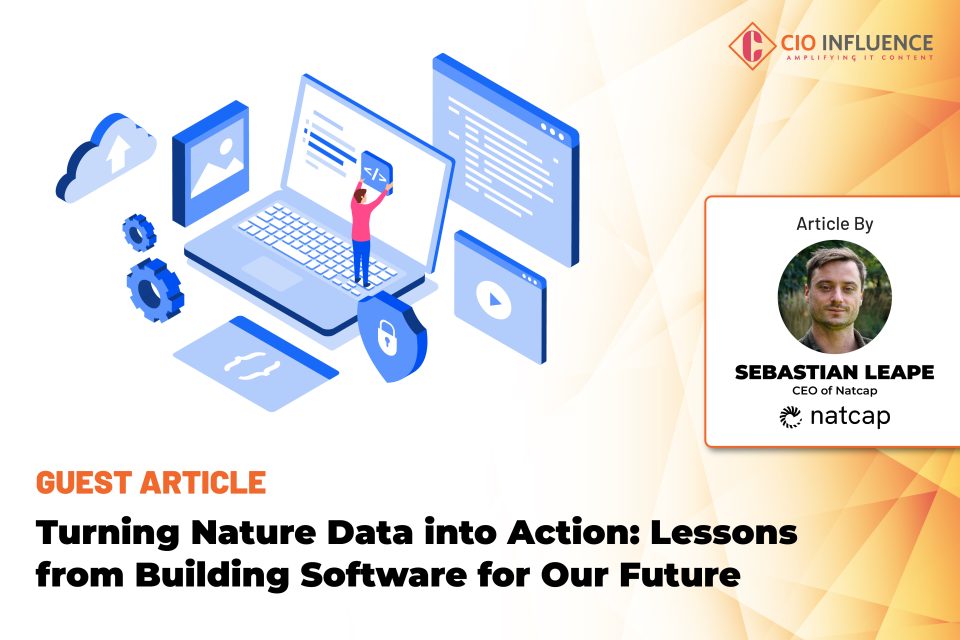As ecosystems degrade and species vanish at alarming rates, the consequences are rippling through both natural systems and the global economy. There is growing recognition that nature’s stability underpins our economic resilience, and businesses and governments are starting to act. Compounding this urgency is a wave of new regulations demanding greater transparency and accountability on biodiversity and environmental impacts, such as the Taskforce on Nature-related Financial Disclosures (TNFD). For Chief Information Officers, this signals an important challenge: turning vast and complex biodiversity data into actionable insights that companies can use to comply with regulations and make sustainable decisions.
Also Read: GPU – CPU – NPU: Understanding the Differences and Their Strategic Importance
The good news is that tech-driven organisations are rising to meet this challenge. By translating environmental data into effective software solutions, we empower industries to manage their ecological footprint, comply with evolving regulatory frameworks, and integrate nature-positive strategies into their core business models. Along the way, we’ve learned important lessons that CIOs can apply to complex data challenges in their organisations.
The current state of biodiversity data presents a formidable challenge. With data coming from diverse sources—satellite imagery, IoT sensors, citizen science, and more—it remains decentralised, inaccessible, and difficult to interpret for non-experts. This data includes everything from species population trends to the location of key biodiversity areas, often in varied formats that are not standardised or easily compatible with enterprise software. For example, data from the WWF Biodiversity Risk Filter, while invaluable, can be challenging to integrate into business decision making. This disjointed landscape leaves companies struggling to extract practical insights from nature and biodiversity data.
However, this complexity also presents an enormous opportunity for innovation. Advanced technologies are enabling new ways to unlock the value of nature and biodiversity data. At Natcap, we see this in action as the world’s leading consulting firms use our platform to extract credible, ready-to-analyse data for voluntary alignment with the world leading TNFD framework and mandatory compliance with the Corporate Sustainability Reporting Directive (CSRD). With Natcap, consultants can quickly access data at scale and harness automated analysis to explain and aggregate the raw metrics. This allows them to build robust strategies for their clients at a fraction of the cost and in a fraction of the time of sustainability experts developing this manually. What makes this possible is not just the quality of the data, but the accessibility and credibility we provide by connecting users with vital datasets, such as IBAT, and aligning with global reporting standards.
Also Read: CIO Influence Interview with Serge Lucio, VP and GM of Agile Operations Division at Broadcom
Building software for biodiversity management comes with its own set of challenges, and through our own journey we have landed on three key elements CIOs should prioritise for these types of data projects:
- Decision useful: Environmental consultants and corporate sustainability teams need support simplifying complex nature and biodiversity data to help them find decision useful insights.
- Automated analysis: Provide explainers, aggregation & insights to simplify the generation of insight from to the raw data
- Customisation: Different industries have different environmental challenges. Software should offer customizable features to suit the specific data needs of sectors like agriculture, energy, and retail.
- Visualisation: Intuitive dashboards and visual tools are essential for helping teams make real-time decisions about their environmental impact.
- Scalable: As biodiversity data continues to grow with advances in technology—such as IoT devices and satellite imaging—scalability will be key. Building solutions that can scale with the increasing volume and variety of biodiversity data is essential. CIOs should look to create systems that are flexible and scalable, ensuring that companies are prepared to handle the growing influx of data while maintaining high standards of data integrity and usability.
- Secure: Nature and biodiversity risks and opportunities are location specific, unlike climate. This means that understanding the location of operations or supply chains is important to inform an accurate assessment of nature and biodiversity insights. Sharing location data is sensitive for most companies, so nature and biodiversity tools must meet high security standards. Among other things ensuring complete customer data isolation, supporting in-country deployment.
Looking ahead, businesses need to view biodiversity not as a curiosity far removed from their core business priorities, but a core asset that contributes to their long-term sustainability. As the regulatory landscape shifts and societal expectations rise, companies that incorporate nature-positive metrics into their ESG strategies will be better positioned to thrive. Software plays a crucial role in this transformation, enabling businesses to track and value their impact on nature in the same way they do with other critical assets.
[To share your insights with us as part of editorial or sponsored content, please write to psen@itechseries.com]


